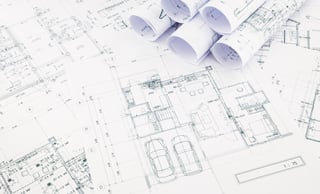
Successful visual merchandising starts at ground level. Your store’s floor plan determines how appealing a shopper’s first look inside will be, and how tempted they will be to browse and buy. Perfect floor plans depend on your store’s size and shape, but there’s more to it than that.
A great layout isn’t only about making maximum use of floor space. It’s about creating maximum shopping experience – one that’s enticing and feels comfortable – for your customers. So what you sell and to whom are also critical considerations. The best layout for a grocery store is nothing like the ideal plan for a small boutique. Or a toy store.
The functional side of floor plans.
You can use specialized design software or pencil and paper to create your layout, but it must be accurately to scale. Otherwise, fixtures and traffic flow may not work as you envisioned. So measure your space first, noting the location of any permanent interior structures such as columns, doorways, restrooms, etc.
Every layout is a matter of geometry. You can choose:
- A grid pattern that consists of straight or diagonal aisles. These are the most efficient, for you and for shoppers, so they are good for groceries and similar stores.
- A “racetrack” pattern that makes it easy for shoppers to naturally circumnavigate your store.
- A free-form arrangement that invites lingering – ideal for apparel and high-end merchandise.
Think about traffic flow and the type(s) of fixtures you will be using. Gondolas lend themselves to a strong aisle pattern, whereas free-standing racks, tables, and display cases are better-suited to a less rigid pattern. Don’t forget that wall space is part of your “floor” plan. Your layout should also support loss prevention, by ensuring good visibility into every shopping area.
And speaking of traffic flow, bear in mind the “butt-brush effect.” Female shoppers shy away from spaces where their derriere might accidentally contact someone else’s. So watch the width of your aisles or pathways.
The psychology of floor plans.
Room to maneuver is just the beginning. You have to understand how customers maneuver through your store. For instance, just inside your door is a transition area where they “decompress.” American shoppers usually turn right, making that initial space “lake front property.” “Speed bumps” will encourage them to slow down and look.
Even the best-designed layout doesn’t automatically guarantee customers will browse your entire store. That’s where merchandise displays come into play. Think about how you will arrange merchandise throughout the interior of your store. That includes endcaps.
Retail stores that don’t have traditional aisles can still create endcap-style displays. Think of them as “turning points” that help shoppers transition from one display area to the next while simultaneously offering them something new to browse and buy.
Learn everything you can about these areas plus the psychological and practical aspects of cash wrap location. Then, pull it all together, and you’ll be able to create perfect floor plans for your store.
